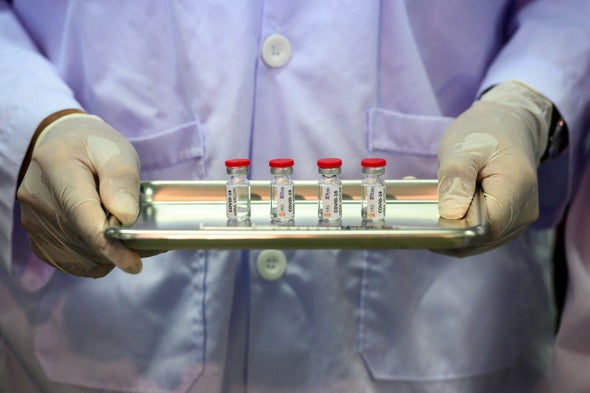Telescoping testing time lines and approvals may expose all of us to unnecessary dangers
By William A. Haseltine on

The excitement and enthusiasm for a COVID-19 vaccine by the end of 2020 is both palpable and understandable. We all hope for a rapid end to the pandemic and an effective vaccine would be a surefire solution. But there are risks that come with a fast-tracked vaccine delivered end of this year, not the least of which are the risks related to the safety of the vaccine itself.
Telescoping testing timelines and approvals may expose all of us to unnecessary dangers related to the vaccine. While preclinical trials to evaluate the potential safety and efficacy of vaccine candidates are likely to include tens of thousands of patients, it is still unclear whether that number will be large enough and a trial will last long enough to evaluate safety for a drug that would be administered to so many. The US alone plans to vaccinate hundreds of millions of people with the first successful candidate. One serious adverse event per thousand of a vaccine given to 100 million people means harm to 100,000 otherwise healthy people.
Aside from questions of safety that attend any vaccine, there are good reasons to be especially cautious for COVID-19. Some vaccines worsen the consequences of infection rather than protect, a phenomenon called antibody-dependent enhancement (ADE). ADE has been observed in previous attempts to develop coronavirus vaccines. To add to the concern, antibodies typical of ADE are present in the blood of some COVID-19 patients. Such concerns are real. As recently as 2016, Dengavxia, intended to protect children from the dengue virus, increased hospitalizations for children who received the vaccine.
Questions also arise around the efficacy of a potential vaccine. The little we know of the current generation of COVID-19 vaccines raises serious questions regarding their ability to protect people from infection. We know all the candidates tested to date in non-human primates failed to protect any of the monkeys from infection of the nasal passages, the primary route of human infection. Failure to protect entirely from infection fits with all we know about attempts to protect monkeys from two other deadly coronaviruses, those that cause SARS and MERS.
On a brighter note, at least some of the candidate vaccines did raise significant immune responses. How that translates to protection of humans is uncertain though as monkeys do not become noticeably ill or exhibit many of the life-threatening consequences of COVID-19, even when exposed to high doses of the virus via the nose, lung, and rectum simultaneously. As many of the most serious COVID symptoms do not appear until late in the disease course, sometimes four to five weeks following exposure, there is a possibility that we will not have sufficient time to judge efficacy of a new vaccine, even by the lower standard of symptom amelioration.
An effective COVID-19 vaccine also faces several hurdles beyond our control. The older we get the poorer our ability to respond to vaccines. Resistance to vaccination begins early at age 30 and becomes progressively more profound with time. That is especially troubling as those over 60 are the population most at risk. Vaccination of the elderly may sometimes succeed by administering repeated doses and by increasing the potency of the vaccine with powerful adjuvants. But these adjuvants can be especially risky for the very old.
It seems a folly then to rush our way towards a vaccine in 2020 if it is likely to have only limited benefit to the population most in need and may put otherwise healthy people at risk. The risk goes far beyond the dangers a COVID vaccine alone may hold. Public support for vaccines in general is already an issue. Trust in other lifesaving vaccines will be eroded even further if a COVID vaccine goes wrong and many more people—children especially—will be at risk if vaccination rates fall.
Yes, we are all increasingly longing for an end to the outbreak. But a safe vaccine, effective for all those at risk, is worth the wait, especially when we have other solutions in hand. We already know from the experience of countries in Asia that the epidemic can be stopped in its tracks with basic public health measures: widespread testing, contact tracing, and mandatory controlled quarantine—not necessarily in a dismal public health facility as many imagine, but in our own homes with virtual supervision or in a hotel environment. These efforts alone could bring new infections down to almost zero within just weeks.
https://www.scientificamerican.com/article/the-risks-of-rushing-a-covid-19-vaccine/
